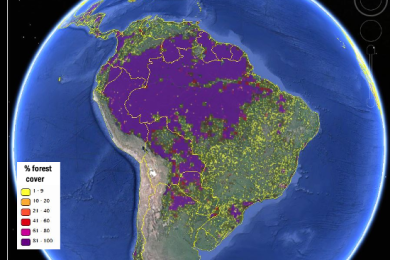The International Institute for Applied Systems Analysis (IIASA) Geo-Wiki team have produced new global forest maps combining citizen science with different data sources.
"The new maps rely on a combination of recent multisensory remote sensing data, statistics and crowdsourcing," said Dmitry Schepaschenko, the lead author of the study. "By combining different data sources, and incorporating the input of trained citizen scientists, we were able to produce new maps that are more accurate than any existing data source."
IIASA further explains the method of the mapping process: "The study introduces two global forest maps, both at one-kilometer resolution, which provide a good compromise between the level of detail and global coverage. The first, which the researchers call the “best-guess” map, uses eight different data sources and relied on a network of citizen scientists to check or validate the classification of land cover, by looking at high-resolution satellite imagery of different locations. Compared to existing data products, the researchers found, the new hybrid map was more accurate both for forest location and estimation of percentage forest cover."
The maps were published in the journal Remote Sensing of the Environment and are freely available for download on the Geo-Wiki website.

